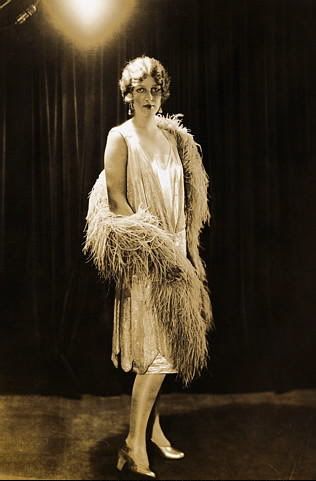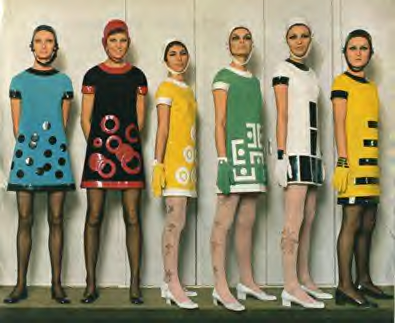Cheap Jacks, An American vintage goldmine!!
18-09-2008
The store today is packed to the roof, years of collecting and hording of clothing are stored away, just waiting to be rediscovered and once again shown off to the viewing eye. At Cheap Jacks they “Take pride in our ability to preserve what amounts to wearable history for our many customers”
Customers roaming the store have the chance to snatch a glimpse of a military frock coat worn during the war of 1812 by an Andrew Jackson troop member, whilst going forward in time can also discover the Civil War era, from military coats and cotton hoop skirts that were even worn by Scarlett O Hara in the 1860’s.

Beginning in the 20’s, Cheap Jacks hold a variety of clothing, all of which demonstrate the fashion and social revolution occurring at that time. The political influence of the stock market soaring meant the clothes became a little more risqué. The Victorian era was put in the past along with long hemline, kneecaps began to show, rolled down stockings and the influence of movies and jazz came into the limelight. The victory of women gaining the vote meant many a night was spent dancing away in silk velvet dresses with dropped waistlines and plunging necklines on display. Silk brocade shawl- collared coats and beaded evening bags came into play. Women were now glamorous; any girl could be the next Hollywood star…

The 30’s spelt W.A.R. Tent cities, breadlines and soup kitchens covered the once glamorous cities. Though the “Golden age of Hollywood” was brought in which allowed citizens to sit in the dark, escaping the entire outside world to watch a movie, the fashion industry clearly resembled the dark days which were to come. Hemlines were lowered, though so were the neck lines. Woolen jersey, rich velvets and satin were spread across the screens, not teasing the audience but reminding them of the future of fashion. Trousers became fashionable for women as many had to work, but also Katherine Hepburn became an iconic figure amongst most.

1940’s, World War II, had a political and patriotic influence, though rations were limited, and most material went to the fighting men, people became more resourceful. Scrap metal was collected, vegetable gardens were planted and rayon was made to look like silk. Although women didn’t have any money or wealth they still didn’t want to appear poor, no matter what the situation was! ‘Rosie the Riveter’ or women, who replaced men in the workplace, began to fashion out high-waisted trousers and wide legged bottoms. Mouton fur was not only warm but also fashionable for those in the evening, although not the cheapest item on the market; it was ‘needed.’

The swinging 50’s had James Dean, Elvis, Marlon Brando and “I like Ike” which automatically set the trends and relished in the fact that the war was over and everyone, including fashion, could move on! The country had been under strict control for the past decade, rules and regulations on what you couldn’t and couldn’t wear had dictated fashion, yet the country’s youth had now finally began to rebel, this would eventually flow into the 60’s and beyond. The result of the war had led people now, however, to dress in a more conservative manor, ladies wore pearl with peter pan collars, and skirts were long but nipped in at the waist. Stiletto heels, Persian lamb coats and short swing coats were worn whilst jiving to the likes of Chuck Berry, Jerry Lee Lewis and Elvis, girls had peddle pushers, scarf’s in their hands and shirts tied in knots whilst fluttering their eyes lashes at guys who wore motorcycle jackets and blue jeans.

The decade of Chanel, Balenciaga and Oleg Cassini. Every girl wanted to be Jackie Kennedy and every boy wanted to date Jackie Kennedy, this was until The Beatles were born. Collarless suits, narrow trousers, skinny ties were worn across the country by every man in sight whilst girls hair grew longer and their hem lines grew a lot shorter! The mini-skirt was born and went hand in hand with flat ballet pumps and the likes of Twiggy. The idea of ‘peace’ and a hippy nation took over, flared corduroys and flowers in your hair were seen everywhere, as were The Beatles, or Beatle wannabes.

The 70’s exchanged copying an icon to becoming an individual icon, people began to do what they liked, hemlines were like hairstyles, constantly changing and never having a set rule on what was in and not. Rudi Gerneich’s topless bathing suit gave way to experimentation for all. Platform shoes, psychedelic prints and jumpsuits hit the catwalk and hit studio 54, the place to be and to be seen at! Denim was big, everything was denim and if it was stonewashed it was even better.

The 80’s went to the complete opposite end of the previous two decades. The return of ladies elegance was back. Cotton again ruled the mills but big hair, big shoulders and power ruled women. It was either a ‘preppy’ or ‘dynasty’ image. Hemlines were brought down further, either at the knee or calf and dressed with a blouse. Men dressed in their Members only jackets, small collared shirts and acid-washed jeans whilst a hint of the 40’s crept back in again with double breasted jacket and vests.
Today Cheap Jacks holds clothing from every decade, all of which have a little story behind them. If you ever have the chance to pop into Cheap Jacks or are even lucky enough to stumble upon one day then count yourself very lucky, and make sure you buy a piece of history from this historical cave full of unknown jewels…
By Genevieve Rogers























